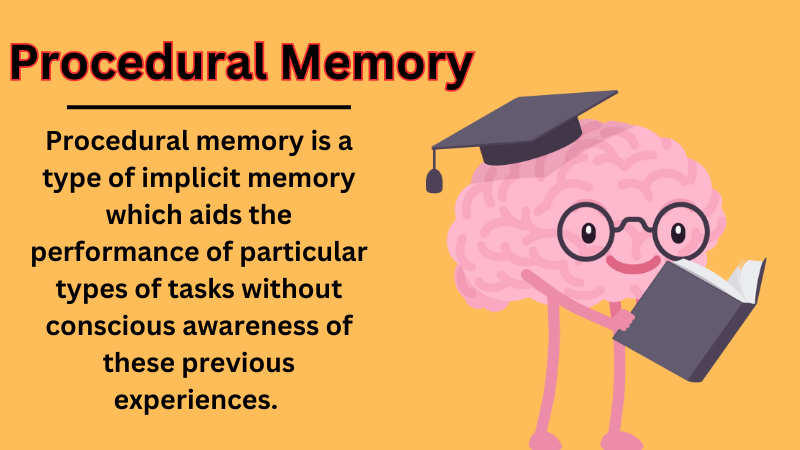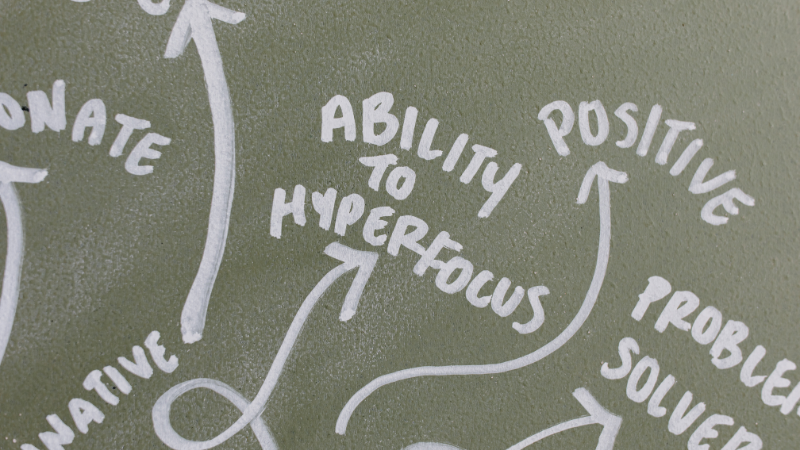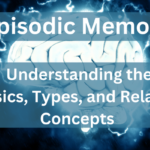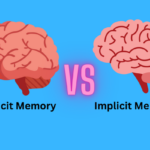Unveiling Procedural Memory: Exploring the Brain’s Hidden Know How
Procedural Memory Consolidation: How Brainwaves Impact Skill Learning – This article explores how brainwave patterns during sleep affect the consolidation of procedural memories, such as motor skills and habits. Research suggests that specific sleep stages, like slow-wave and REM sleep, play pivotal roles in enhancing the transfer of learned skills to long-term memory storage. Understanding these neural mechanisms could lead to improved techniques for skill acquisition and rehabilitation programs.

Introduction
Memory is a complex and multifaceted phenomenon that underpins our daily experiences and shapes our interactions with the world. Among its various forms, procedural memory stands out as a critical component with profound implications for mental health and well-being.
In this exploration, we delve into the intricacies of procedural memory, shedding light on its distinct characteristics and its role in shaping our behaviors, skills, and habits. As a mental health expert specializing in memory types, I invite you to join me on a journey to unravel the mysteries of procedural memory and understand how it influences our lives in profound ways.
Understanding Procedural Memory
Definition of Procedural Memory
Procedural memory is a crucial component of our memory system, responsible for storing and retrieving the skills, habits, and actions we perform without conscious effort. It is often referred to as “muscle memory” and involves the unconscious learning of tasks through repetition and practice. Unlike declarative memory, which deals with facts and events, procedural memory centers on the how-to knowledge of performing tasks.
Distinction between Declarative and Procedural Memory
Declarative memory involves the conscious recollection of facts and events, while procedural memory focuses on the automatic execution of learned tasks. For example, when you recall historical dates, you’re using declarative memory. In contrast, riding a bicycle or typing on a keyboard effortlessly demonstrates procedural memory.
Role of Procedural Memory in Daily Life
Procedural memory underpins many aspects of our daily routines. From tying shoelaces to driving a car, playing a musical instrument to cooking a favorite recipe, these actions are guided by procedural memory. This memory type enables us to perform tasks efficiently and frees up cognitive resources for more complex activities.
Examples of Procedural Memory in Action
- Driving: After learning to drive, the intricate motions of steering, accelerating, and braking become second nature.
- Typing: Touch typing relies on this memory, enabling us to effortlessly find keys without conscious thought.
- Playing Sports: Skills like shooting a basketball or swinging a golf club become refined through practice and this memory.
- Artistic Skills: Artists develop intricate brushwork and techniques through repeated practice, stored in their procedural memory.
- Dance: Dancers memorize intricate routines, relying on this memory to seamlessly execute complex moves.
Procedural memory allows us to master tasks and skills through repetition, making it an essential aspect of our cognitive abilities.
Experience the Advantage: Elevate clarity and memory with Himalayan “Biological Gold” – tap into nature’s wisdom.
Mechanisms of Procedural Memory
Procedural memory, a fundamental aspect of human memory, operates behind the scenes to enable the acquisition and execution of skills and habits. This type of memory is distinct from declarative memory, which involves the conscious recollection of facts and events. Instead, procedural memory involves the learning and retention of how to perform specific actions, such as riding a bike, typing, or playing a musical instrument. Understanding the mechanisms that underlie this type of memory provides insight into how we acquire and refine various skills throughout our lives.
Brain Regions Involved:
Procedural memory relies on the coordinated activity of several brain regions, including the basal ganglia, cerebellum, and motor cortex. The basal ganglia play a central role in the initiation and execution of motor sequences, while the cerebellum contributes to the precision and timing of movements. The motor cortex is responsible for translating these neural signals into actual physical actions.
Neural Pathways and Connections:
As we repeatedly perform a skill or engage in a habitual action, neural connections in the brain strengthen through a process called synaptic plasticity. This involves the strengthening of synapses, or connections between neurons, which facilitates the smooth and efficient execution of the learned skill. Over time, these connections become more robust, allowing for smoother and more automatic performance.
Formation of Habits and Skills:
The formation of these types of memories involves a process of trial and error. Initially, we consciously engage in learning and practicing a skill, and with repetition, it becomes more automatic and less effortful. This transition from conscious effort to automaticity is a hallmark of procedural memory. Habits, which are essentially learned automatic behaviors, also rely on procedural memory. Once a habit is formed, it can be challenging to break, underscoring the lasting impact of this memory on our behavior.
Understanding these mechanisms not only sheds light on how we acquire and refine skills but also has implications for therapeutic interventions and rehabilitation programs. By tapping into the neural pathways and connections associated with procedural memory, experts can develop strategies to enhance learning, recovery, and overall cognitive functioning.
Procedural Memory and Mental Health
Procedural memory, a fundamental aspect of memory function, significantly influences mental health and well-being. This memory type plays a pivotal role in our daily routines, shaping our ability to perform various tasks, skills, and habits with minimal conscious effort. Understanding the relationship between this type of memory and mental health opens doors to innovative therapeutic approaches and sheds light on memory-related mental health issues.

Impact of Procedural Memory on Mental Health
Procedural memory contributes to mental health in multifaceted ways. Efficient procedural memory formation allows individuals to navigate their environment smoothly, boosting self-confidence and autonomy. Mastery of skills through this type of memory fosters a sense of accomplishment and self-efficacy, crucial factors in maintaining positive mental health. Conversely, difficulties in procedural memory function can lead to frustration, reduced self-esteem, and even anxiety.
Therapeutic Applications of Procedural Memory
- Skill-Based Therapies: Leveraging this type of memory in therapeutic settings is gaining traction. Activities such as art therapy, music therapy, and sports rehabilitation capitalize on procedural memory’s ability to retrain the brain and enhance motor skills. Engaging in these activities can alleviate symptoms of depression, anxiety, and stress, fostering a sense of achievement and promoting emotional expression.
- Cognitive-Behavioral Interventions: Incorporating procedural memory techniques into cognitive-behavioral interventions holds promise. Patients can learn adaptive behaviors and coping strategies that become ingrained through procedural memory, leading to lasting positive changes in thought patterns and emotional responses.
Procedural Memory Dysfunctions and Related Disorders
Disruptions in procedural memory can contribute to various mental health disorders. Conditions such as obsessive-compulsive disorder (OCD) involve maladaptive procedural memory, leading to repetitive behaviors. Parkinson’s disease can impair this type of memory, affecting daily activities. Understanding these connections informs targeted interventions and improves the overall quality of life for individuals affected by these disorders.
To summarize, the interplay between procedural memory and mental health is intricate and impactful. Leveraging procedural memory’s potential in therapeutic contexts offers innovative ways to promote well-being and treat mental health conditions. Exploring the underlying mechanisms of how procedural memory affects mental health provides insights into optimizing memory-based interventions and enhancing overall psychological health.
Development and Aging of Procedural Memory
Procedural memory, the foundation of our motor skills and habits, undergoes significant changes as we progress through different life stages. Understanding how procedural memory evolves from childhood to old age provides valuable insights into optimizing its functions.
Procedural Memory Development in Children: During childhood, the brain is particularly receptive to acquiring new procedural memories. Children effortlessly learn to ride bicycles, tie shoelaces, and play instruments, often demonstrating impressive adaptability. This period of rapid skill acquisition is influenced by the brain’s plasticity and the abundance of neural connections. Activities that engage multiple senses and encourage hands-on learning foster robust procedural memory formation in children.
Changes in Procedural Memory with Aging: As we age, the efficiency of procedural memory processes can decline. Older adults might experience challenges in acquiring new skills or adapting to novel technologies. This decline is partly attributed to changes in brain structure and neurotransmitter levels. However, despite these changes, well-established procedural memories tend to remain intact, allowing individuals to continue performing tasks they’ve mastered earlier in life.
Strategies for Maintaining and Enhancing Procedural Memory
- Lifelong Learning: Engaging in new activities and acquiring fresh skills keeps the brain active, slowing down procedural memory decline.
- Physical Exercise: Regular physical activity improves blood flow to the brain, enhancing memory function, including procedural memory.
- Healthy Lifestyle: Adequate sleep, balanced nutrition, and stress management contribute to optimal memory performance.
- Cognitive Training: Utilizing brain-training exercises and memory games can help maintain procedural memory abilities.
- Social Interaction: Engaging in social activities that require coordination and cooperation fosters procedural memory retention.
By recognizing the dynamic nature of procedural memory across our lifespan and adopting strategies to support its development and maintenance, we can continue to enjoy the benefits of our well-honed skills and habits, even as we navigate the various stages of life.
Enhancing Procedural Memory

Procedural memory plays a pivotal role in our ability to perform tasks, acquire skills, and carry out daily routines effortlessly. Enhancing this type of memory can lead to improved performance and a higher quality of life. Here are some strategies that can help boost procedural memory:
A. Optimizing Sleep for Memory Consolidation: Research has shown that sleep is essential for consolidating procedural memories. During sleep, the brain replays and reinforces the neural pathways associated with learned skills. Both slow-wave sleep and rapid eye movement (REM) sleep have been linked to procedural memory enhancement. Ensuring a consistent sleep schedule and practicing good sleep hygiene can maximize the benefits of sleep on memory consolidation.
B. Practice and Repetition: The age-old adage “practice makes perfect” holds true when it comes to procedural memory. Repetition helps solidify neural connections and strengthen the circuits responsible for specific skills. Engaging in deliberate and focused practice over time can lead to noticeable improvements in skill acquisition and execution.
C. Multi-sensory Learning: Engaging multiple senses while learning and practicing a skill can enhance procedural memory. When we involve different sensory modalities—such as sight, sound, touch, and even smell—the brain forms richer and more interconnected memories. For instance, learning to play a musical instrument benefits from visual cues, auditory feedback, and tactile sensations working together to reinforce memory.
Remember, the key to improving procedural memory is consistent and intentional practice. While there are no shortcuts to mastering a skill, these strategies can significantly expedite the learning process and enhance the retention of acquired abilities. By harnessing the power of sleep, practice, and multi-sensory engagement, individuals can unlock their full potential for procedural memory enhancement.
As our understanding of the brain’s intricacies grows, it’s becoming increasingly evident that enhancing procedural memory not only contributes to personal development but also holds promise for therapeutic interventions, educational strategies, and innovative approaches to memory enhancement in various fields.
Harness Ancient Wisdom: Elevate focus and memory – try the Himalayan secret for enhanced mental performance.
Real World Implications
Procedural memory, a fundamental aspect of our cognitive functioning, holds significant implications for various real-world scenarios. As we delve into the practical applications of this type of memory, it becomes evident that its understanding can greatly enhance learning, performance, and overall quality of life.
A. Educational strategies for optimizing procedural memory
In the realm of education, grasping the mechanisms behind procedural memory offers educators valuable insights. By tailoring teaching methods to leverage this memory type, educators can facilitate better skill acquisition and retention among students. Engaging approaches that involve hands-on activities, practical demonstrations, and interactive learning can help learners internalize complex processes and tasks more effectively. Furthermore, incorporating multisensory experiences and real-world applications into lessons can strengthen the encoding of these types of memories, fostering deeper understanding and long-term retention.
B. Occupational and vocational applications
Procedural memory plays a pivotal role in professional settings, particularly those that require routine tasks and specialized skills. From healthcare professionals performing intricate procedures to artisans perfecting their crafts, the mastery of procedural memory underpins proficiency. Training programs that emphasize deliberate practice and gradual skill refinement align with the principles of this type of memory. Moreover, simulations and virtual training environments can immerse individuals in realistic scenarios, accelerating the development of procedural skills in various fields.
C. Rehabilitation and memory enhancement programs
The therapeutic potential of procedural memory extends to the realm of mental health and rehabilitation. Cognitive-behavioral interventions capitalize on the brain’s ability to form and strengthen these types of memories, aiding individuals in overcoming maladaptive behaviors and cultivating healthier habits. Rehabilitation programs for neurological conditions and injuries often incorporate activities that harness this type of memory, facilitating motor function recovery and enhancing daily living skills. As research progresses, we anticipate innovative approaches that harness the power of procedural memory to support individuals with cognitive impairments, ultimately improving their independence and overall well-being.
In conclusion, the applications are diverse and far-reaching. From classrooms to workplaces to therapeutic settings, understanding and harnessing this memory type can lead to more effective learning, skill development, and rehabilitation strategies. As we continue to explore the depths of procedural memory’s potential, we pave the way for a brighter future in education, professional advancement, and mental health support.

Future Directions
A. Emerging Research on Procedural Memory
Procedural memory continues to be a captivating area of research in the field of cognitive psychology. Scientists are delving into the intricate neural mechanisms that underlie its formation and consolidation. Advanced neuroimaging techniques, such as fMRI and EEG, are unveiling new insights into the brain regions and networks responsible for this type of memory. This growing body of knowledge is shedding light on how procedural memory interacts with other cognitive processes, offering fresh perspectives on memory disorders and potential treatment strategies.
B. Integration of Technology and Memory Augmentation
As technology rapidly evolves, there is an increasing interest in harnessing its power to enhance procedural memory. Virtual reality (VR) and augmented reality (AR) applications have shown promise in creating immersive environments for skill acquisition. Interactive simulations and gamified learning experiences engage multiple senses, aiding in the development and retention of procedural memories. Wearable devices and neurofeedback technologies are also being explored to provide real-time insights into cognitive processes, paving the way for personalized memory enhancement approaches.
C. Ethical Considerations and Privacy Concerns
The exploration of procedural memory’s potential raises ethical considerations, particularly in terms of privacy and consent. As technology interfaces more intimately with our cognitive processes, questions about data security, informed consent, and potential unintended consequences come to the forefront. Striking a balance between the benefits of memory augmentation and the protection of individuals’ cognitive privacy will be crucial in shaping the ethical landscape of this field.
To summarize, the study is an ever-evolving journey that holds immense promise for our understanding of cognition and its applications in various aspects of life. As research continues to unfold, the integration of technology and ethical considerations will shape the future of procedural memory enhancement, offering opportunities to optimize learning, rehabilitation, and overall cognitive well-being.
Harness Ancient Wisdom: Elevate focus and memory – try the Himalayan secret for enhanced mental performance.
Conclusion
In the intricate landscape of memory, procedural memory stands as a crucial cornerstone, weaving its influence through our daily lives. From the mundane tasks that make up our routines to the complex skills that define our expertise, this type of memory silently guides us. This article has delved into the depths of procedural memory, shedding light on its mechanisms, its implications for mental health, and its evolution across the lifespan.
As we conclude this exploration, it’s evident that procedural memory isn’t a mere cognitive process; it’s intertwined with our emotions, habits, and personal growth. Its role in mental health is not to be underestimated. Skill-based therapies harness its power to heal, cognitive-behavioral interventions leverage its potential for change, and its disruptions reveal insights into various neurological conditions.
The journey of procedural development in children and its evolution as we age showcases the ever-adapting nature of our minds. Strategies to bolster and sustain this type of memory become paramount, with sleep’s restorative role and purposeful practice emerging as key players.
Looking ahead, the horizon holds promise. As research unfurls the mysteries of this type of memory, it beckons us to reimagine education, work, and rehabilitation. With technology poised to both assist and challenge our memory capabilities, ethical considerations will navigate its integration into our lives.
In conclusion, procedural memory is not just a cognitive process; it’s a dynamic force that shapes who we are and what we can become. As we embrace its influence and continue our journey through the realms of memory, let us stride forward with the awareness that understanding and harnessing procedural memory can truly transform our mental health and enhance our well-being.
Frequently Asked Questions (FAQ’s)
Q1: What is procedural memory, and how does it differ from other types of memory?
A1: Procedural memory is a type of long-term memory that stores information about skills, habits, and how to perform tasks without conscious awareness. Unlike declarative memory, which deals with facts and events, procedural memory focuses on actions and sequences.
Q2: How does procedural memory affect our daily lives?
A2: Procedural memory plays a vital role in everyday activities. It enables us to ride a bicycle, type on a keyboard, or drive a car without consciously thinking about each step. It underlies our ability to acquire expertise and execute tasks efficiently through repeated practice.
Q3: Can procedural memory be improved or enhanced?
A3: Yes, procedural memory can be improved through deliberate practice and repetition. Engaging in activities that challenge your skills and gradually increasing difficulty can strengthen procedural memory. Adequate sleep is also essential, as it aids in memory consolidation and skill refinement.
Q4: How does procedural memory relate to mental health and therapy?
A4: Procedural memory has therapeutic applications. Skill-based therapies, such as art, music, and sports, tap into its potential to promote healing and well-being. Cognitive-behavioral interventions utilize procedural memory to reshape behaviors and thought patterns. Understanding procedural memory disruptions can provide insights into conditions like Parkinson’s disease and motor skill disorders.



